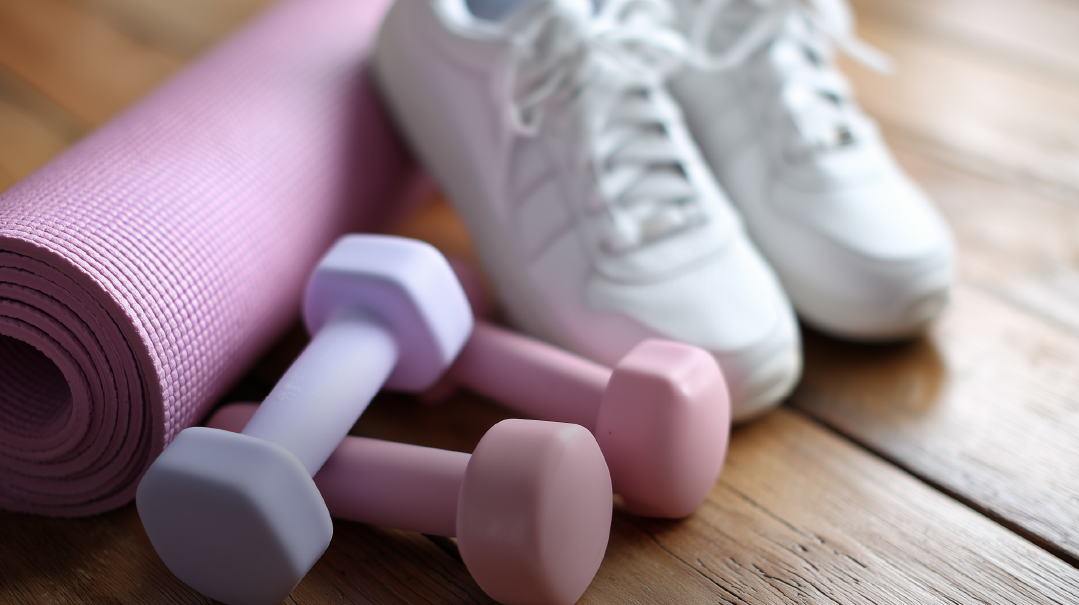Deep Dive: Run, Run

So you want to start running? A personal trainer shows us how

IT can feel overwhelming to think about starting to run, especially if you compare yourself to someone who’s been running for years and has miles under their belt. Don’t do that! Remember, running is accessible. It’s 80 percent mental strength and 20 percent physical strength, says Rivky Horowitz, a personal trainer from Lakewood who has run multiple races, including half marathons and triathlons.
“If you’re running, you’re a runner,” says Rivky. “It doesn’t matter if you’re doing one mile or thirteen miles.”
You don’t need special equipment, but it’s important to have a good pair of sneakers you use exclusively for runs. The right pair of sneakers can protect your knees, feet, and joints, and can prevent injuries. They cushion your feet as you run, and provide support. There are stores that specialize in fitting running sneakers. The salespeople observe your walk and run, paying close attention to your ankles and arches, and make a personalized recommendation.
Once you have good running shoes, make sure you’re warmed up. Then you’re ready to start running.
Some Advice to Keep in Mind:
Start Slow
If you’re new to exercise, start by walking three times a week for about 20 minutes. After you’re comfortable with this routine, consider doing walk-run intervals, where you interchange between walking and running. Walk-run intervals are great because they make a run more attainable for beginners. They also help you build endurance. Start with shorter run times, and gradually make them longer as your stamina grows. You can begin your walk-run intervals by running for 20 seconds and walking for 90 seconds. Gradually work your way up to 60 seconds of running, 60 seconds of walking. Begin with 20 minutes all together, then aim for 30.
Learn How to Pace Yourself
It’s tempting to run as fast as you can, but if you do that, you’ll get breathless, and will have to stop. Run at a moderate pace. This is a pace that allows you to talk or sing. If you can’t catch your breath, you need to slow down. If you can sing loudly and easily, you’re moving too slowly.
It’s the Minutes, Not the Miles
While it’s tempting to log the miles, you’re better off setting a timed goal as opposed to a mileage goal. If there’s a day you’re feeling sluggish, you can run at a slower pace, and still meet your running goal for the day. This way, you won’t get discouraged, and you’ll be motivated to keep at it, even if you do have a slower day every so often.
Don’t Run Every Day
Give your body a chance to recover. Running puts pressure on your muscles, bones, joints, and ligaments, and running every day puts you at risk for injury. You’ll want to run enough so that your body can build endurance, but not so much that your body has no chance to recover. Aim for three runs a week. This allows your body to progress and gives you enough rest time for you to recover between runs.
“Once a week makes a very hard run,” says Rivky. “Three times a week keeps your body in running mode.”
You can consider adding a fourth running day after six weeks of running.
Be Safe and Smart as You Progress
Maybe you have a race in mind, or maybe you just feel ready, but at some point you’ll want to up your mileage. Do this carefully. Count the miles you accumulated the last week you ran. Add ten percent of that to one of your weekly runs. Leave the others at the same pace they’ve been.
Additional Tips from Rivky Horowitz:
Get the Right Gear
After you find the right pair of sneakers, get the right clothes. Look for moisture-wicking fabric to prevent chafing. Make sure you like the sneakers and clothes because if you like them, you’ll be happy to wear them and use them.
Find a Running Partner
Running is a commitment, and consistency is key. A partner will hold you accountable and make the workout more fun.
Consider a Running App
C25K is a great app for beginners. It provides different interval workouts that train you to run a 5K. It’s also free.
Strava records your workouts and saves all the information in one place, allowing you to track your progress.
Rivky likes her Garmin watch. It allows her to record and save her runs, and provides analysis.
Take Care of Your Body
As a runner, you need a decent amount of sleep, and you need to eat properly. You need more carbs and a little protein before a run, and more protein and fewer carbs after a run. You must hydrate as well.
Rivky’s Suggested Beginner’s Running Plan
Week 1
5-minute warmup
1-minute run: 1.5-minute walk
Repeat eight times
5-minute cool down
Week 2
5-minute warmup
1.5-minute run/jog: 2-min walk
Repeat for 20 minutes
5-minute cool down
Week 3
5-minute warmup
90-second jog: 90-second walk
3-minute jog: 3-minute walk
90-second jog: 90-second walk
5-minute cool down
Week 4
5-minute warmup
3-minute jog: 90-second walk
5-minute jog: 2.5-minute walk
3-minute jog: 90-second walk
5-minute jog: 2.5-minute walk
5-minute cool down
(Originally featured in Family First, Issue 944)
Oops! We could not locate your form.







